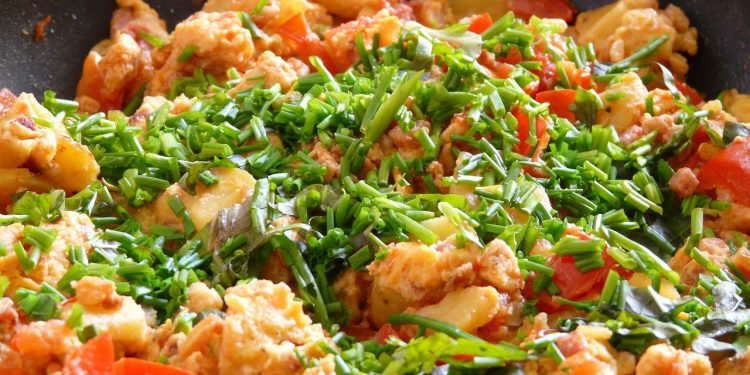Stir-frying is one of the quickest and most versatile cooking methods, perfect for creating flavorful meals with a variety of vegetables, proteins, and sauces. Traditionally, stir-frying involves using oil to cook ingredients at a high temperature, giving them that iconic crispy texture and caramelized flavor. However, for those looking to cut down on fats or eliminate oil from their diet entirely, water stir-frying is a fantastic alternative. With the right techniques, you can achieve delicious, healthy results without sacrificing flavor or texture. This guide will teach you how to stir-fry with water instead of oil, allowing you to enjoy your favorite stir-fried dishes in a lighter, healthier way.
Why Stir-Fry with Water?
There are several reasons why you might choose to stir-fry with water instead of oil. Whether you are aiming to reduce calories, eliminate processed fats, or simply make your meals lighter and more health-conscious, water stir-frying offers an excellent solution.
- Lower Calories: Cooking with water instead of oil significantly reduces the calorie count of your meal. A tablespoon of oil contains about 120 calories, which can add up quickly when cooking.
- Health Benefits: Eliminating oil can benefit heart health by reducing saturated fat intake, and it can help those who need to manage conditions like high cholesterol.
- Less Grease: Cooking without oil means no greasy residue on your food or your pans, making cleanup easier and keeping your dish fresh-tasting.
Key Techniques for Stir-Frying with Water
Water stir-frying requires a slightly different approach compared to the traditional method that uses oil. By using the right amount of water, the proper cooking temperature, and a little bit of patience, you can create a delicious and flavorful stir-fry that stands up to its oil-cooked counterpart.
1. Preheat the Pan Properly
Just like traditional stir-frying, the key to a good water-based stir-fry is to properly preheat your pan. This helps prevent your ingredients from sticking and ensures even cooking.
- How to Do It: Place your wok or skillet over medium-high heat and let it preheat for a few minutes. You can test if the pan is hot enough by sprinkling a few drops of water into it—if the water sizzles and evaporates almost instantly, it’s ready.
2. Use Small Amounts of Water
Instead of pouring in a lot of water all at once, use small amounts as needed to keep ingredients from sticking and to help steam them. The trick is to add just enough to prevent burning without soaking the ingredients.
- How to Do It: Start by adding a tablespoon or two of water to the hot pan. Add the vegetables or ingredients, and keep stirring them continuously. As the water evaporates, add a little more—just enough to keep things moving and to prevent sticking.
3. Stir Frequently
Since there is no oil to coat the ingredients, it’s important to keep them moving frequently. Stirring helps distribute the water evenly, preventing burning and allowing all ingredients to cook at the same rate.
- How to Do It: Keep your spatula or cooking spoon moving throughout the cooking process. Stir-frying with water is a hands-on method that requires constant attention, but it’s well worth it for the health benefits.
4. Control the Heat
Managing the heat is crucial when stir-frying with water. The water will evaporate quickly, and you need to maintain enough heat to cook the ingredients without steaming them too much.
- How to Do It: Cook over medium-high heat and adjust as needed. If the vegetables start to steam instead of stir-fry, increase the heat slightly and add less water at a time.
Choosing the Right Ingredients for Water Stir-Frying
The beauty of stir-frying is that you can use a wide variety of ingredients, including vegetables, tofu, tempeh, and even noodles. When stir-frying with water, some ingredients lend themselves better to the method.
1. Vegetables
- Best Choices: Vegetables with a higher water content, such as bell peppers, broccoli, zucchini, mushrooms, and bok choy, work particularly well for water stir-frying. They cook quickly and release some of their own moisture, making them ideal for this method.
- Preparation Tips: Cut vegetables into uniform pieces to ensure even cooking. The smaller the pieces, the faster they will cook and the easier they will be to keep moving in the pan.
2. Plant-Based Proteins
- Tofu: When stir-frying tofu, consider pressing it beforehand to remove excess moisture, which will help it maintain a firmer texture. Water stir-frying tofu works well if you use extra-firm tofu and cut it into bite-sized pieces.
- Tempeh: Tempeh is another great protein option for water stir-frying. Steam it beforehand to soften it slightly, making it easier to absorb the flavors of your sauce.
3. Aromatics
Aromatics like garlic, ginger, and green onions are essential to give your stir-fry that distinct flavor. When cooking without oil, you need to be careful not to burn them, as water evaporates quickly.
- How to Cook Aromatics: Start by adding a small amount of water to the pan, then add your garlic or ginger. Stir constantly and add more water as needed to prevent them from sticking or burning. Once the aromatics become fragrant, add your vegetables and continue the stir-frying process.
Building Flavor in Your Water-Based Stir-Fry
Without oil, you need to rely on other ingredients to add depth of flavor to your stir-fry. There are plenty of flavorful liquids and seasonings that can create a rich, satisfying dish.
1. Soy Sauce or Tamari
Soy sauce or tamari adds a salty, umami kick to your stir-fry. Opt for a low-sodium version if you’re watching your salt intake.
- How to Use: Add soy sauce towards the end of the cooking process so it coats the vegetables evenly without burning.
2. Vegetable Broth
Using vegetable broth instead of water can add a rich layer of flavor to your stir-fry. It helps maintain moisture while also providing depth to your dish.
- How to Use: Substitute water with vegetable broth in small amounts to prevent sticking and to add flavor as you cook.
3. Citrus Juice and Zest
Adding a splash of lemon or lime juice and some zest can brighten up the flavors of your stir-fry, giving it a fresh and tangy finish.
- How to Use: Add citrus juice just before serving to maintain its fresh flavor.
4. Fresh Herbs and Spices
Fresh herbs like cilantro or basil, as well as spices like turmeric, cumin, or chili flakes, can add significant flavor without needing oil.
- How to Use: Sprinkle fresh herbs on top of the finished stir-fry, and add spices during the cooking process for a fragrant and flavorful dish.
Water Stir-Fry Recipe Example: Vegetable Stir-Fry with Tofu
This simple recipe shows you how to create a delicious water stir-fry that’s light, healthy, and full of flavor.
Ingredients:
- 1 block extra-firm tofu, pressed and cubed
- 1 red bell pepper, sliced
- 1 cup broccoli florets
- 1 zucchini, sliced
- 2 cloves garlic, minced
- 1 tablespoon grated fresh ginger
- 2-3 tablespoons low-sodium vegetable broth or water
- 3 tablespoons low-sodium soy sauce
- Juice of 1/2 lime
- 1 tablespoon cornstarch mixed with 2 tablespoons water (optional, for thickening)
Instructions:
- Preheat a large skillet or wok over medium-high heat. Add a tablespoon of water or vegetable broth.
- Add the minced garlic and grated ginger, stirring constantly to prevent burning.
- Once fragrant, add the tofu cubes and cook for 3-4 minutes, adding more broth as needed to prevent sticking.
- Add the bell pepper, broccoli, and zucchini. Stir frequently, adding small amounts of broth as necessary to keep the ingredients moving and to prevent sticking.
- Once the vegetables are tender-crisp, add the soy sauce and stir well to coat all the ingredients.
- If desired, add the cornstarch mixture and cook for an additional minute until the sauce thickens slightly.
- Finish with a squeeze of lime juice and serve immediately over steamed rice or noodles.
Tips for Perfecting Water Stir-Frying
- Prep Everything First: Stir-frying is a fast process, so having all your ingredients prepped and ready to go is essential. Chop vegetables, press tofu, and mix any sauces before you start cooking.
- Use a Non-Stick Pan: A good non-stick pan or well-seasoned wok is crucial for water stir-frying to prevent sticking.
- Add Water in Stages: Resist the urge to add too much water at once. Adding water in small amounts allows you to maintain high heat, giving your vegetables a stir-fried texture rather than a steamed one.
Final Thoughts on Water Stir-Frying
Stir-frying with water instead of oil may take some practice, but it’s an excellent technique for those seeking a healthier, lower-calorie way to enjoy their favorite stir-fried dishes. By using a combination of high heat, frequent stirring, flavorful liquids, and aromatic seasonings, you can create a satisfying stir-fry that doesn’t skimp on taste or texture. Give it a try, and you may find yourself preferring this lighter, cleaner way to cook.






